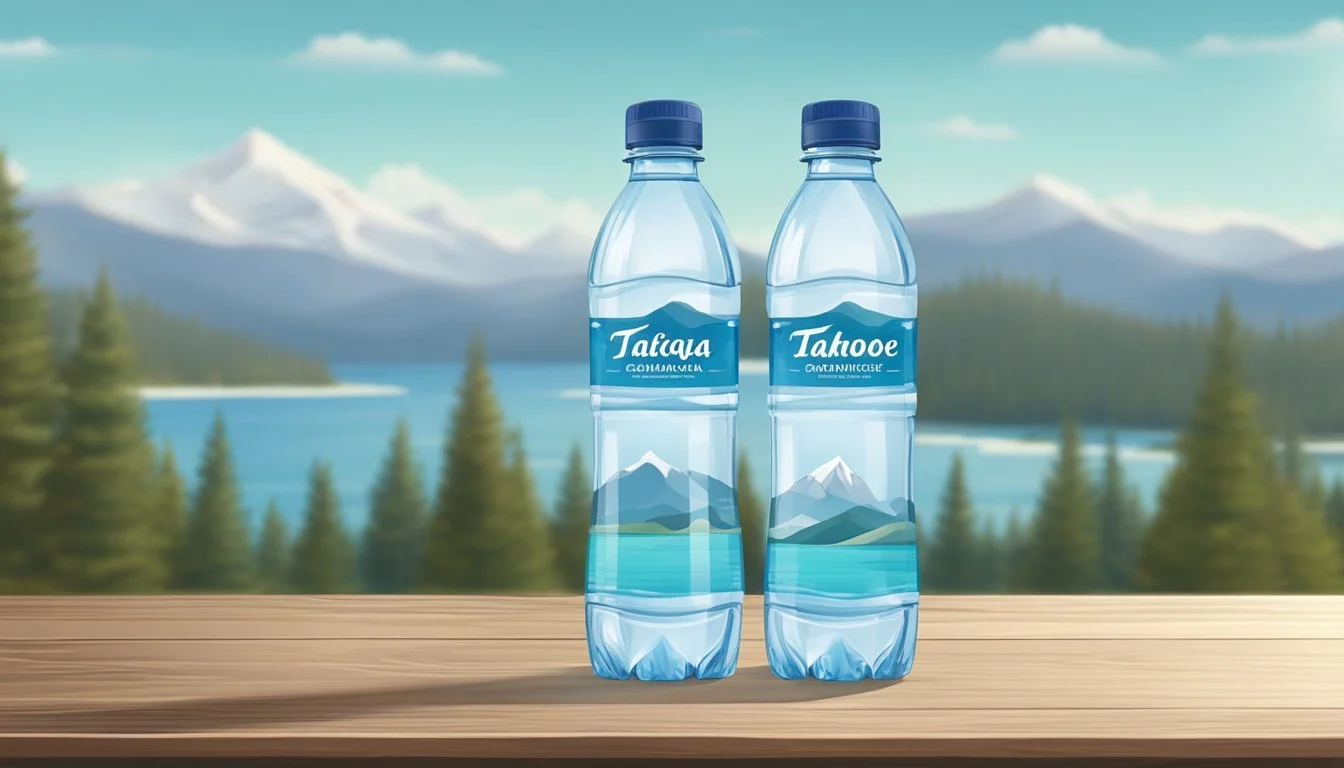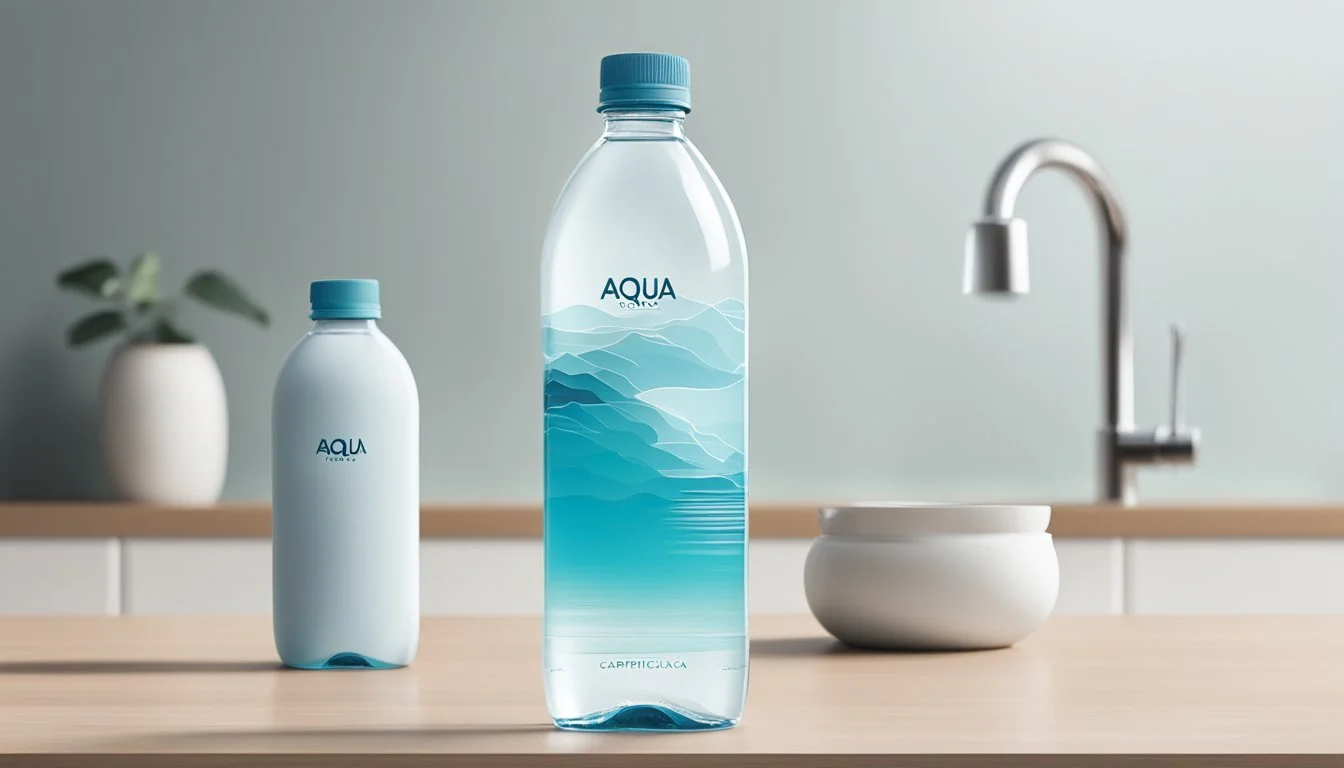Aqua Carpatica vs. Tahoe
Bottled Water Comparison
In a market saturated with countless bottled water brands, discerning which to choose can be daunting. Aqua Carpatica, hailing from the Carpathian Mountains of Romania, boasts naturally high mineral content and a commitment to purity. Tahoe, originating from the pristine waters of Lake Tahoe, emphasizes its pure and refreshing taste, with no additives.
When comparing Aqua Carpatica to Tahoe, their distinct sources and processing methods reveal that Aqua Carpatica stands out for its rich mineral profile and naturally occurring electrolytes, making it a top choice for those seeking hydration benefits beyond just quenching thirst. Tahoe, with its clean and crisp taste, appeals to consumers looking for a straightforward, refreshing drinking experience without added minerals.
This comparison aims to dissect what sets Aqua Carpatica and Tahoe apart in the crowded bottled water market, helping you make an informed decision based on taste, source, and health benefits.
Origin and Source
Understanding the origin and source of the water helps illustrate the unique qualities that Aqua Carpatica and Tahoe bottled waters offer. This section delves into the geological and environmental backgrounds that shape each brand's water characteristics.
Carpathian Springs and Aqua Carpatica
Aqua Carpatica originates from the Carpathian Mountains in Romania. The water is sourced from natural springs and is well-regarded for its purity and mineral composition.
The Carpathian region boasts limestone formations which provide a natural filtration system, enriching the groundwater with essential minerals. This natural filtration process results in Aqua Carpatica's distinctively pure and fresh taste.
One notable feature is the low nitrate content due to the pristine environment of the Carpathian Mountains. Drinking water with low nitrates is beneficial for health, making Aqua Carpatica an appealing choice for consumers seeking cleaner hydration options.
Lake Tahoe and Its Natural Environment
Tahoe bottled water is sourced from Lake Tahoe, located on the border of California and Nevada in the USA. Known for its clear, blue waters, Lake Tahoe is one of the deepest and most pristine lakes in North America.
The lake's alpine setting and unique geological landscape play a crucial role in its water quality. Fed by mountain streams and snowmelt, the water from Lake Tahoe undergoes minimal processing. The natural environment acts as a filtration system, maintaining high clarity and purity levels.
The combination of snowmelt and groundwater contributes to its crisp, refreshing taste, highly prized by outdoor enthusiasts and health-conscious consumers alike.
Water Quality and Purity
Assessing the quality and purity of bottled water involves examining the mineral content, potential contaminants, and the absence of nitrates. These elements are crucial to determining the best option for health and taste preferences.
Assessing Mineral Content
Mineral content is a significant factor when comparing Aqua Carpatica and Tahoe. Aqua Carpatica boasts a rich mineral profile, including calcium and magnesium, which can enhance the taste and provide health benefits. Its total dissolved solids (TDS) level is well-balanced, contributing to its naturally refreshing flavor.
Tahoe, on the other hand, also contains essential minerals but at varying levels depending on the source. It’s often appreciated for its clean taste, yet its mineral balance might not be as consistent as Aqua Carpatica’s. Evaluating the specific mineral composition of each brand can help buyers choose based on their preferred flavor and health benefits.
Purity and Contaminants
Purity is non-negotiable for bottled water consumers. Aqua Carpatica undergoes rigorous testing to ensure it is free of common contaminants. This brand prides itself on containing no detectable levels of toxic substances, including heavy metals and synthetic chemicals. Its purity is often verified through independent lab tests, emphasizing its commitment to quality.
Tahoe water is also tested for purity, with a focus on eliminating harmful contaminants. Some sources suggest that Tahoe utilizes reverse osmosis processes to filter out impurities, ensuring a safe drinking experience. However, comparing the rigorousness and transparency of the testing procedures could be crucial for consumers with specific purity concerns.
Nitrate-Free Water
Nitrate levels are a critical factor for health-conscious consumers. Aqua Carpatica markets itself as being naturally nitrate-free, making it an ideal choice for those looking to avoid nitrates entirely. This is particularly important for vulnerable populations such as pregnant women and infants.
Tahoe water, while generally low in nitrates, may not always guarantee the same nitrate-free status. Consumers should check each batch to confirm nitrate levels. When choosing between the two, the natural nitrate-free characteristic of Aqua Carpatica can be a significant deciding factor for ensuring the highest standards of water quality and purity.
Health Benefits and Mineral Composition
When comparing Aqua Carpatica and Tahoe bottled waters, several key factors emerge, including hydration efficiency and the potential benefits of their mineral compositions. These elements can significantly influence health outcomes for those who prioritize balanced hydration and mineral intake.
Electrolytes and Hydration
Aqua Carpatica and Tahoe both offer essential electrolytes crucial for maintaining proper hydration. Aqua Carpatica, sourced from Romania’s Carpathian Mountains, is known for its unique blend of calcium, magnesium, and potassium. Magnesium, in particular, helps regulate muscle and nerve functions.
Tahoe water boasts a balanced mineral profile as well. With an impressive concentration of calcium and bicarbonate, it supports bone health and pH balance. Additionally, the sodium content in both brands is relatively low, making them ideal for those monitoring their sodium intake.
Electrolytes like potassium and calcium present in both waters enhance hydration by facilitating fluid balance within the cells. Regular consumption of these waters can support daily hydration needs while providing vital minerals.
Alkaline Water Benefits
Aqua Carpatica's naturally alkaline properties can offer added health benefits. Alkaline water typically has a higher pH level, which some believe can help neutralize acid in the bloodstream. This can potentially aid in reducing acid reflux and improving overall digestion.
Tahoe, meanwhile, offers a slightly lower alkaline concentration but still maintains a favorable pH balance suitable for daily consumption. The presence of bicarbonate helps buffer acids, thus supporting metabolic processes.
While scientific consensus on alkaline water’s benefits is yet to be firmly established, users may still find the potential benefits of improved hydration and digestion compelling. Both brands, with their unique mineral compositions and low nitrate levels, present viable choices for health-conscious individuals.
Taste Profile Analysis
The comparison of Aqua Carpatica and Tahoe bottled waters centers on their taste profiles, including their immediate and lingering flavors, and the overall mouthfeel experienced by the consumer.
Conducting a Taste Test
A blind taste test was organized to evaluate Aqua Carpatica and Tahoe. The participants sampled both waters without prior knowledge of which brand they were drinking. Aqua Carpatica impressed with its crisp and clean taste, attributed to its naturally nitrate-free composition and low sodium content. Many remarked on its refreshing purity.
Tahoe, sourced from pristine mountain springs, also received high praise. Descriptions often included terms like "fresh" and "neutral," highlighting its balanced taste without any overpowering mineral quality. Overall, Tahoe’s subtlety made it a favorite among those preferring a gentler water flavor.
Aftertaste and Water Feel
The aftertaste of Aqua Carpatica is notable for its minimal presence, leaving a slightly sweet and clean finish. Its low mineral content contributes to a smooth and velvety mouthfeel, ensuring no lingering heaviness. Consumers often appreciate this lighter sensation, especially after repeated sips.
Tahoe offers a similarly agreeable aftertaste, with its smooth texture contributing to a satisfyingly clean mouthfeel. Participants noted a faint mineral taste that gently fades away, adding a hint of complexity. The water feels light and invigorating, making it suitable for those who enjoy a consistently refreshing experience without any aftertaste distractions.
Environmental Impact and Sustainability
The environmental footprint of bottled water mainly revolves around packaging choices and the sustainable practices of each company. Both Aqua Carpatica and Tahoe have taken steps to address this impact.
Bottles and Packaging Choices
Aqua Carpatica and Tahoe offer multiple packaging options to cater to consumer preferences while addressing environmental concerns. Aqua Carpatica utilizes glass bottles as a significant part of their packaging strategy. Glass is reusable and recyclable, making it a more sustainable option compared to plastic.
Tahoe, on the other hand, primarily uses plastic bottles but emphasizes that they are made from recycled materials. This reduces the need for new plastic production and lessens the environmental impact. In comparing these, while glass bottles are environmentally friendly, recycled plastic still presents a lower carbon footprint than traditional plastic.
Efforts to minimize packaging impact are evident in both brands. Tahoe's commitment to using 50% recycled plastic helps in reducing waste. Aqua Carpatica promotes reusable glass bottles, encouraging a shift away from single-use plastics.
Eco-friendly Practices
Both companies engage in eco-friendly practices that further their commitment to sustainability. Aqua Carpatica sources water from natural springs and adheres to strict environmental regulations, ensuring minimal disruption to ecosystems.
Tahoe is focused on reducing its carbon footprint by optimizing their production processes. They employ energy-efficient methods and invest in renewable energy sources to power their facilities. This demonstrates a steps beyond just packaging, aiming at a broader impact.
Water preservation efforts are another important aspect. Aqua Carpatica has initiatives to protect its water sources. Tahoe, on the other hand, supports water conservation projects, focusing on both the environment and local communities.
Product Variety and Options
Both Aqua Carpatica and Tahoe provide a range of bottled water options that cater to various consumer preferences, particularly in terms of still and sparkling variants.
Still and Sparkling Preferences
Aqua Carpatica offers a distinct advantage with its naturally nitrate-free and low sodium water. This is available in both still and sparkling versions. The sparkling variant is appreciated for its fine effervescence, making it a favorite among those who enjoy a crisp, refreshing taste.
Tahoe, on the other hand, typically focuses on high-quality still water. While it may not always offer as many sparkling options, its still water is sourced from pristine environments, ensuring a clean and pure drinking experience.
Bottled Water Brands Comparison
When comparing Aqua Carpatica to Tahoe, Aqua Carpatica stands out with its Carpathian Mountain source. The water benefits from being protected from chemicals and pollutants, offering a product that is both pure and chemically safe.
Tahoe, while revered for its still water, does not emphasize unique mineral content as prominently as Aqua Carpatica. The primary focus for Tahoe is on purity and natural taste, which appeals to consumers seeking straightforward hydration.
Aqua Carpatica’s offerings cater to a variety of tastes with its premium sparkling and still water options, making it versatile. Tahoe focuses on a single type of product, often reducing complexity but potentially limiting choice for the consumer.
Market Availability and Accessibility
Aqua Carpatica and Tahoe have distinct market availability and accessibility, affecting how easily consumers can purchase these brands. The distribution channels and global reach of these two brands vary widely, influencing their presence in different regions.
Grocery Stores and Online Retailers
Aqua Carpatica is commonly found in a wide range of grocery stores throughout the USA and Europe, including major retailers like Walmart and Kroger. In addition to physical stores, it is accessible online through Amazon and various e-commerce platforms, making it convenient for consumers preferring online shopping. Ocado in the UK also stocks Aqua Carpatica, reinforcing its presence in Europe.
Tahoe, on the other hand, has a more limited distribution network. It is primarily found in select grocery stores on the West Coast of the USA. While it is available on Amazon, the options for online purchase are fewer compared to Aqua Carpatica, which may limit its accessibility for consumers outside its primary market area.
Global Availability
Aqua Carpatica has a broader global presence, available in multiple countries across Europe, North America, and parts of Asia. This extensive reach is due in part to its partnerships with several international distributors, enhancing its availability to a global audience.
Tahoe’s global availability is relatively restricted. Its primary market remains within the US, specifically in regions close to the source in California. International availability is minimal, making it challenging for consumers outside the USA to access Tahoe without relying on specific online retailers.
This difference in global distribution reflects the varying market strategies of the two brands, with Aqua Carpatica focusing on wider international expansion compared to Tahoe’s more regional concentration.
Price Considerations and Value
When choosing between Aqua Carpatica and Tahoe bottled water, price and value are critical factors. Consumers often seek products that balance cost and quality, and this comparison aims to highlight these aspects.
Comparing Costs
Aqua Carpatica offers competitive pricing. A typical bottle, such as their 500ml Still Natural Mineral Water, is priced at around 65p. The 500ml Naturally Sparkling variant costs slightly more at 69p. These prices position Aqua Carpatica as an affordable option for premium bottled water.
Tahoe, on the other hand, is generally found to be slightly more expensive. A 500ml bottle can range from $1 to $1.50. This slight premium may be justified by Tahoe's targeting of a very high-quality, pristine water experience.
In comparing costs, Aqua Carpatica provides a more budget-friendly option without compromising health benefits, while Tahoe tends to attract consumers willing to spend a bit more for perceived higher quality.
Quality vs. Price Debate
Consumers are often faced with the quality versus price dilemma. Aqua Carpatica is known for its nitrate-free composition and natural mineral benefits, offering great value for its price. The brand maintains a robust reputation for delivering clean, safe water at a reasonable cost, making it a favorite among health-conscious buyers.
Tahoe markets itself on purity and a refreshing taste profile. While it is more expensive, the pricing reflects the brand's investment in high-end sourcing and stringent quality control. Tahoe appeals to those who prioritize superior taste and quality over cost.
The quality versus price debate hinges on individual preferences. Aqua Carpatica provides excellent health benefits at a lower cost, while Tahoe offers a premium water experience for those willing to pay extra.
Consumer Perceptions and Brand Reputation
Aqua Carpatica and Tahoe bottled water brands are highly regarded among consumers. Exploring brand loyalty, trust, reviews, and rankings reveals differing strengths in this competitive market.
Brand Loyalty and Trust
Aqua Carpatica enjoys a strong following due to its perceived purity and unique source in the Carpathian Mountains. Consumers appreciate its natural mineral composition and commitment to environmental sustainability.
Tahoe, on the other hand, leverages its crisp, clean taste sourced from Lake Tahoe. Consumers trust Tahoe’s transparency about water quality and the rigorous purification processes in place.
Both brands face competition from other well-established names like Fiji, Voss, and Evian, but maintain a loyal customer base by emphasizing their unique attributes and consistent quality.
Reviews and Consumer Rankings
Aqua Carpatica frequently ranks high in consumer reviews. Reviews highlight its smooth taste and minimal aftertaste. The brand's commitment to transparency and detailed water source information solidifies its reputation.
Tahoe receives commendations for its refreshing taste and clarity. It's often compared favorably against competitors like Smartwater and Icelandic Glacial.
Consumer rankings for both brands reflect positive experiences, with many placing them alongside other trusted brands like Mountain Valley and Acqua Panna. The emphasis on natural sourcing and rigorous quality control processes enhances their standing in the highly competitive bottled water market.







